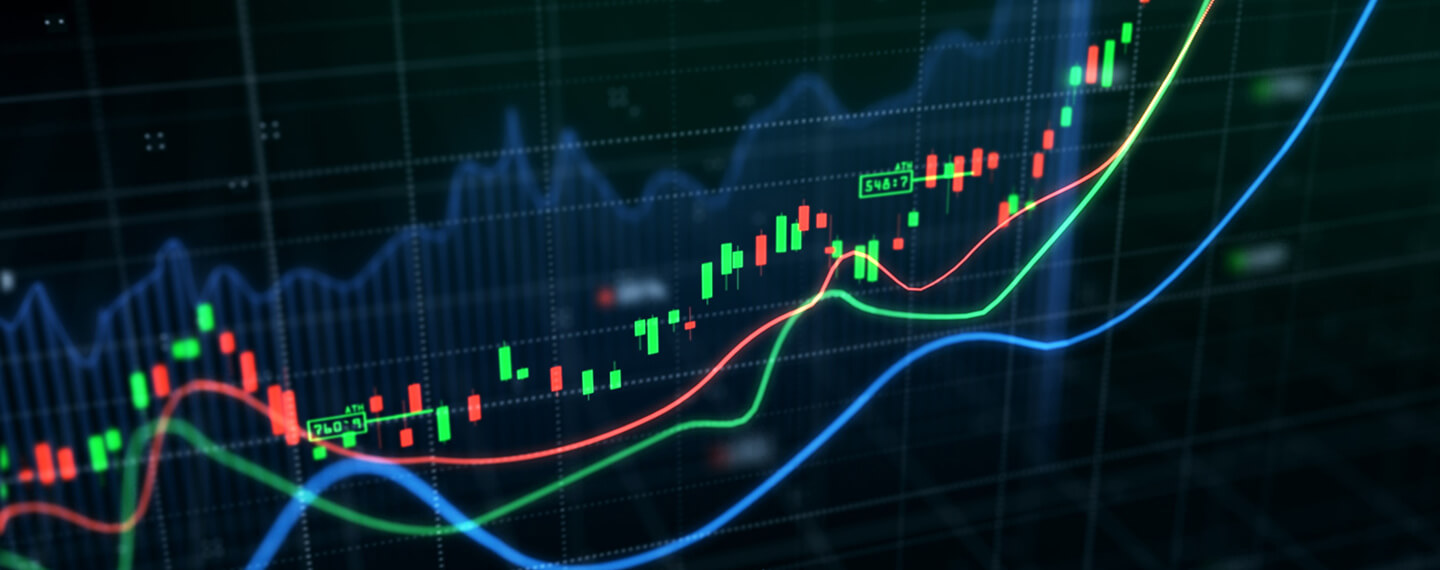Markets have seen a turbulent start to the year and world equities are now nearing -10% year-to-date in euro terms. The focus on Ukraine has added to inflation and interest rate concerns, but in our view the volatility of early 2022 should be regarded as a correction and not a reversal of trend.
Stubborn inflation and rising interest rates may be a drag on market performance for some time yet, but the strong world economy and earnings picture suggest equities will resume an uptrend in the medium term, albeit with the lower expected returns we highlighted in our year ahead outlook. Sector-wise, we continue to favour equities with quality, defensive growth and reopening biases.
1. What’s driving market weakness?
The Ukrainian crisis has been a major factor driving markets lower in most recent days but the primary driver this year has really been the change in monetary policy with all central banks in the developed world now reducing support.
Interest rates are expected to rise up to eight times in the US over the next twelve months and there is the possibility of higher rates in the euro area although the European Central Bank (ECB) has said this is data dependent.
2. Does the Ukraine conflict alter the market outlook?
Geopolitical crises always lead to a rise in volatility but historically the duration of their impact has been quite short. The reason behind this is that the impact on the global economy has been quite limited in all past crisis, even the ‘Arab Spring’. This appears to be the case here.
Outside of supplying energy to western Europe the Russian / Ukrainian bloc is not a major component in the global economy and thus the impact on global growth should be marginal.
We do get short-term pain and the extent and length of it is impossible to foresee. However, we believe that the current crisis will not materially impact the longer-term growth rate of the global economy and as a result does not impact on our current asset allocation.
3. What’s the outlook for equities?
Rising interest rates are always a difficult time for equity markets but in the past the start of the rate hiking cycle has not meant the end of the economic cycle just a maturing in it.
If we look at past early Federal Reserve (Fed) hiking cycles, such as 2015-2018 and 2004 – 2006, the US equity market was initially volatile but continued to rise on trend as the better growth statistics outweighed the negative impact of the higher rates. We believe that this will be the case now.
Interest rates will be rising but equity markets should advance as growth remains above trend. Supporting this outlook, earnings growth has been much stronger than expected over the last twelve months as inflation has accelerated and forecasts for 2022 continue to rise. Equities have been providing a good hedge against rising inflation.
4. How are equity portfolios positioned for this environment?
We have been moving the equity portfolio towards quality, defensive growth and a reopening bias as we see the pandemic effect wane and the economic cycle matures. This is not suiting year-to-date and has cost us in relative performance, but we still believe that is the best position to have.
Commodity sectors are the best performing and this is getting further momentum from the crisis in the Ukraine. Amongst defensive sectors, Healthcare has been the worst performing as people have sold down the higher growth area of MedTech.
But as we see the economic cycle maturing, we do believe that the higher quality earnings stream will command relatively higher valuations. It may yet be early in this volatility phase, but we do see value in this sector in particular.
5. What about bond markets?
Low yield levels and the prospect of tightening monetary policy have kept us underweight the asset class, which has helped our relative performance. The recent rise in yields was leading us to re-examine this but we had not got there yet and the latest current drop in yields means we will not be altering anything here near term.
We still favour short-dated exposure to limit interest rate risk and corporate exposure to gain some extra yield. Short-dated debt matures relatively quickly, and we can reinvest at higher yields thus providing an improving return as the year progresses. Using short dated corporate debt gives you this and a higher running yield.
6. What to watch next?
Clearly any spiralling of the geopolitical implications of the Ukraine situation will intensify current concerns. On the economic data front, most important for us will be whether there is any material impact on economic or profit growth, so we will be watching specifically how the economic sentiment surveys perform in the short term.
They will be the first to react and undoubtedly will be negatively impacted – but the extent will be important and the split between the euro area and the rest of the world. Company statements will come later – they usually need a couple of months of activity before commenting.
The other item to follow is: does it change central bank thinking? On the one hand we have greater uncertainty over the future level of economic activity which could temper central bank actions. On the other hand, we have further upward pressure on energy prices which would, at least, keep them on their current course and be a negative for markets. It looks evenly balanced, i.e., no change, but we will be watching how it evolves in central bank statements and yield curves.








